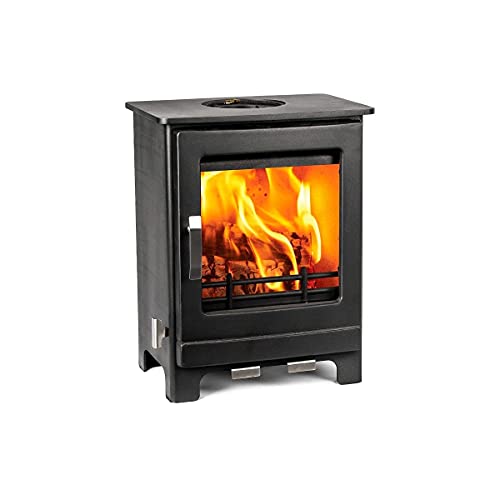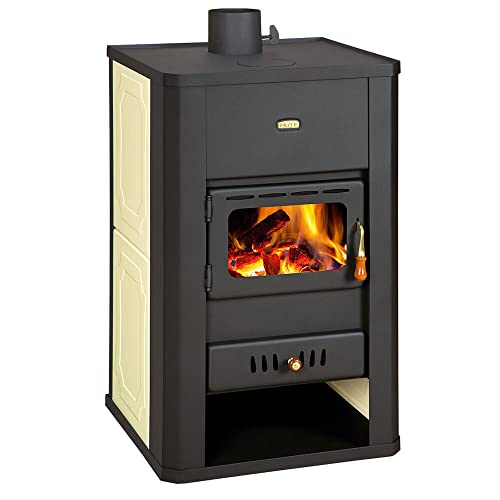 How to Choose the Best Multi Fuel Stoves
How to Choose the Best Multi Fuel Stoves
 Multi fuel stoves combine practical heating capabilities while helping you create a warm and cozy ambience in your home. They come in a variety of styles and can be used to complement both traditional and contemporary interiors.
Multi fuel stoves combine practical heating capabilities while helping you create a warm and cozy ambience in your home. They come in a variety of styles and can be used to complement both traditional and contemporary interiors.
Multiply the length, width, and height of your room in m3 and divide it by 14. This will give you an approximate estimation of the kW output required.
Stability
A solid stove is crucial for backpackers who cook on an open flame. A well-designed stove will feature broad and low stove legs that function as a stable platform for pots and pans. Some stoves also include a flame spread control that allows users to fine-tune the height of the flame to increase stability and safety.
The quality of the flame of the burner is equally crucial to the cooking performance. The top multi-fuel stoves produce the highest amount of heat that quickly boils water and maintains a consistent flame at lower temperatures. This results in increased efficiency in the use of fuel and lower costs.
If you are an ounce counter as many backpackers are — you should be on the lookout for the most fuel-efficient stoves that are available. A stove that is efficient can cut down the amount of fuel canisters you need to carry, saving both weight and space in your pack.
Fuel efficiency is also important if you are planning to travel in remote locations where it may be difficult or impossible to locate new fuel sources. The most reliable and cost-effective option is a multi fuel stove. It can be used anywhere and with the same type of fuel.
Liquid-fuel stoves, that operate on a combination of propane and isobutane are the most sought-after backpacking options. They are simple to use, light and are able to heat a room quickly. However, they have a few disadvantages. They’re not as stable as canister stoves that burn pure white gas. They also have a limited lifespan and aren’t as reliable at higher elevations or in cold.
If you prefer cooking with liquid fuels, you should consider an alternative design for a hybrid stove like the MSR’s Reactor and the Jetboil MiniMo. These hybrid stoves are smaller than traditional stoves that use canisters and have a larger base that provides a stable base for pots. A built-in regulator as well as a sophisticated valve system enhances the capacity of simmering for these hybrids. They’re also cheaper than all-in-one liquid fuel designs. The MSR WhisperLite Universal is a great choice, as it combines European design with the ability to use wood, kerosene, and conventional white gas canisters.
Flame Control
The ability to control the flame on a stove with precision is a crucial feature for anyone planning on cooking at home. The ability to adjust the flame’s height will allow you to adjust the size of your pots, and also control the amount of heat produced – making a huge difference when it comes to cooking. A good flame control system will be able to keep your fire going at a steady pace.
The best control of the flame is also essential for backpackers and campers who want to cook in the field. Many backpacking stoves have twist valves to regulate the height of the flame. However, a built-in flame regulator or sophisticated valve systems are essential to superior flame management.
You can also reduce the chance of having a chimney fire by ensuring that you have a good level of flame suppression. They are the most frequent cause of fires in UK homes. You can lower the risk by keeping the flue shut when not in use, removing every day ash and utilizing an air filter.
The kind of stove you choose will also depend on your camping needs. Certain models are better suited for sheltered locations, while others are more efficient in windy conditions. If you’re camping in often-windy places, an all-in-one stove that burns liquid fuel like the Jetboil Zip could be worth considering. It’s designed to work with isobutane canisters as well as kerosene and auto fuel, while providing good fuel efficiency and boil times.
It is also among the few models that can use charcoal. This can be an enormous benefit for those who love to camp in the wilderness and cook outdoors. Another option is a more traditional wood-burning multifuel stove, like the RoyalFire Warwick. This stunning black steel stove is both Ecodesign and DEFRA compliant, with two door options to suit your space and style – either the clear arch for a modern style or the Tracery with dramatic Gothic arches to give an authentic fireplace look. It’s also among the few stoves that have an effective airwash system that helps minimise the need for manual cleaning.
Reliability
The ability to cook a meal consistently in the wilderness is the most important feature of any stove that is used for backpacking. A stove that performs consistently can be the difference between a pleasant camping experience and a sleep in a cold tent with hungry hiking companions.
People who value reliability should consider an appliance that has a durable, sturdy construction, including cast iron or stainless steel and a robust ignition system. A push-button igniter or a Piezo can add weight and bulk to your stove, but it will also assist you in starting it every time.
An integrated pot support design, like the one used on the Jetboil Flash and MSR WindBurner is more durable than non-integrated designs and provides better control over the flame. However, it leaves the flame exposed to wind, which could impact performance when conditions are severe or you’re hiking at an altitude. If you’re looking for a resistant to wind, Korean brand Kovea makes an intriguing option with their Spider model, which features an angled burner, which positions the pot closer to the flame.
Liquid fuel stoves are among the most reliable option, especially those equipped with multi-fuel capability. These stoves can run on any white gas or isobutane/propane canisters, making them a solid choice for international travel when you’re not sure what kinds of fuel are available. Liquid-fuel stoves also tend to perform best in cold weather and at altitudes, however some newer alternative-fuel stoves offer comparable functionality.
The minimalist designs of a stove with alcohol may be appealing to those who are obsessed for ounces, however they can be a significant compromise when it comes to simmer control and boil times. The PocketRocket 2 is a great choice for those who want to find a middle ground, offering a refined sturdy design with great flame control and an impressive fuel efficiency.
A simple alternative-fuel stove like the Solo Stove Light, is an excellent choice if want to cut down both your weight and costs. The stove comes with an reusable titanium cup that can be tucked into a Nalgene 1-liter or 3.9-ounce tank of propane or isobutane.
Versatility
Depending on what type of backpacking is done, you may require a stove which can be used with different types of fuel. If you’re an ultralight hiker for instance, you may want to skip the traditional canister and go for a wood-burning model that utilizes pinecones and sticks to generate the fire. They’re lightweight, however they require more attention and won’t last as long as a more traditional canister or multi fuel stove 5kw fuel stove.
Canister or multifuel stoves are ideal for backpackers who live at higher altitudes or in colder climates. These stoves are more reliable and provide better control of flames than wood-burning stoves, particularly when used in harsh conditions.
The MSR WhisperLite Universal is one of our favorite examples of a canister-based multi-fuel stove that is versatile and comes at an affordable price. It’s designed to use white gas canisters, and is also compatible with kerosene and unleaded gasoline. This makes it a fantastic option for international travel where you might have difficulty getting local fuel.
Another great option is the WindBurner by MSR, a versatile high-performance stove for backpacking. It’s capable of heating large pots and utensils. It is easy to use, and boasts incredible fuel efficiency and boiling times for its size. It’s also light and easy to repair. It is also small in size.
BTUs are an excellent indicator of the stove’s power however other factors such as flame control and fuel efficiency also play a role. The higher the BTUs the more power the stove has to heat the water quicker and cook food with just one fuel canister.
Some backpackers can go even lighter if they opt for an alternative fuel system such as the Solo Stove Lite. This stove makes fire with solid fuel tablets making it a great option for ultralight backpackers seeking to reduce their weight without sacrificing functionality or quality. However, the grate on this stove is somewhat unstable when it’s loaded up with pots and firewood.
